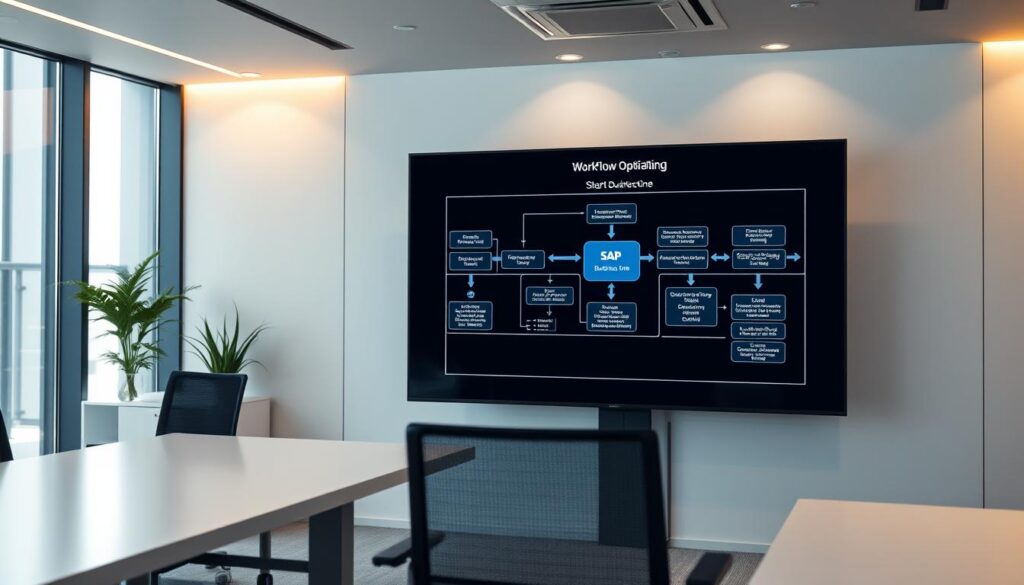Businesses across India are increasingly recognising the transformative power of SAP B1 workflow management in streamlining complex operational processes. SAP Business One automation offers organisations a strategic approach to enhance productivity and reduce manual interventions.
Modern enterprises require intelligent workflow solutions that adapt to dynamic business environments. By implementing custom SAP Business One automation strategies, companies can create flexible, efficient systems that respond quickly to changing operational requirements.
The SAP B1 workflow framework enables businesses to design sophisticated approval hierarchies, automate repetitive tasks, and standardise critical business processes. This technological approach empowers organisations to optimise resource allocation and minimise potential human errors.
Key Takeaways
- Streamline operational processes through intelligent workflow design
- Reduce manual interventions with SAP Business One automation
- Create flexible approval hierarchies
- Enhance organisational efficiency and productivity
- Minimise potential human errors in critical business processes
Understanding SAP B1 Workflow Fundamentals
Workflow management in SAP Business One represents a critical strategy for organisations seeking to streamline their business process automation. By leveraging intelligent system configurations, businesses can transform complex operational tasks into seamless, efficient processes.

The SAP B1 workflow configuration provides businesses with powerful tools to automate repetitive tasks, reduce manual interventions, and enhance overall operational productivity. This approach enables companies to create standardised processes that minimise errors and accelerate decision-making cycles.
Core Components of Business One Automation
At the heart of SAP B1 workflow automation lie several essential components. These include robust task management systems, approval mechanisms, and integrated communication channels. The SAP B1 approval process allows organisations to define precise routing rules, ensuring that critical documents and transactions receive appropriate review and validation.
Key Benefits of Workflow Implementation
Implementing workflow solutions in SAP Business One delivers significant advantages. Organisations can achieve enhanced transparency, reduced processing times, and improved compliance. The system enables real-time tracking of business processes, providing management with comprehensive insights into operational performance.
Essential Prerequisites for Workflow Design
Successful workflow design requires careful planning and strategic consideration. Key prerequisites include identifying process bottlenecks, mapping existing business rules, and ensuring comprehensive user training. Businesses must develop clear objectives and understand their specific operational requirements before implementing SAP B1 workflow configurations.
Implementing Advanced SAP B1 Workflow Solutions

SAP Business One process optimisation requires a strategic approach to workflow customisation. Businesses can unlock significant operational efficiency by implementing advanced workflow solutions that streamline complex approval processes and task management.
Creating multi-level approval hierarchies is crucial for organisations seeking robust SAP B1 task management. These custom workflows enable precise control over decision-making pathways, ensuring that critical approvals follow predetermined routes based on specific organisational rules.
Conditional routing represents a powerful technique in workflow customisation. By establishing intelligent rules, businesses can automatically direct tasks to appropriate stakeholders based on predefined criteria such as transaction value, department, or specific business conditions.
Automated notifications play a critical role in enhancing communication within SAP Business One workflow systems. These alerts keep team members informed about pending tasks, approval requirements, and critical status changes, reducing potential bottlenecks in business processes.
Successful implementation demands careful configuration that aligns with unique business requirements. Organisations should focus on designing flexible workflows that can adapt to evolving operational needs while maintaining clear accountability and transparency throughout the approval process.
By leveraging SAP B1‘s sophisticated workflow capabilities, businesses can transform their operational efficiency, reduce manual interventions, and create more responsive, data-driven decision-making environments.
Conclusion
Designing custom workflows in SAP Business One represents a pivotal strategy for organisations seeking to optimise their operational efficiency. The SAP B1 workflow management approach enables businesses to streamline complex processes, reduce manual interventions, and create more agile technological ecosystems.
Implementing advanced SAP Business One automation techniques allows companies to transform their operational landscapes. By leveraging intelligent workflow design principles, organisations can significantly reduce processing times, minimise errors, and enhance overall productivity across multiple business departments.
The future of workflow management in SAP B1 looks promising, with emerging technologies continuing to drive innovation. Businesses that invest in understanding and implementing sophisticated workflow solutions will gain competitive advantages, enabling them to respond more quickly to market dynamics and internal operational requirements.
Ultimately, successful SAP B1 workflow implementation requires a strategic approach that combines technical expertise, a comprehensive understanding of business processes, and a commitment to continuous improvement. As technology evolves, organisations must remain adaptable and open to exploring new workflow automation strategies that can propel their operational effectiveness to new heights.

